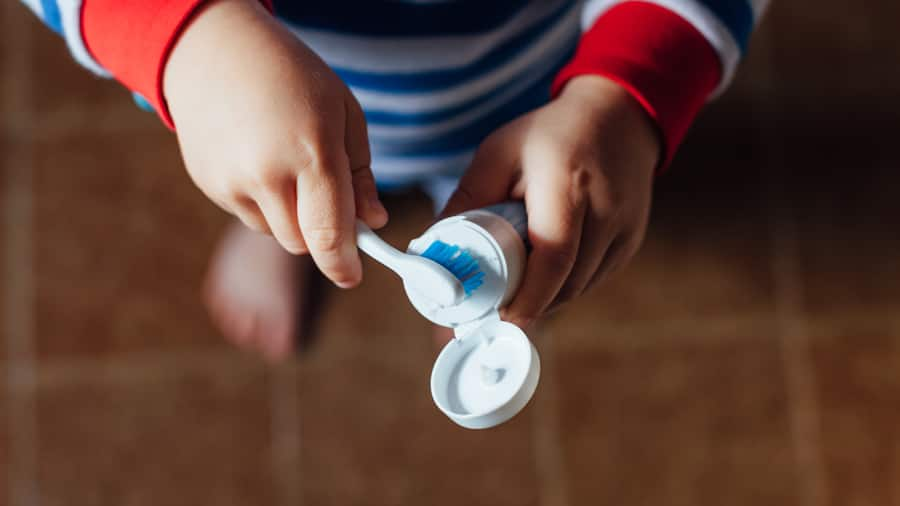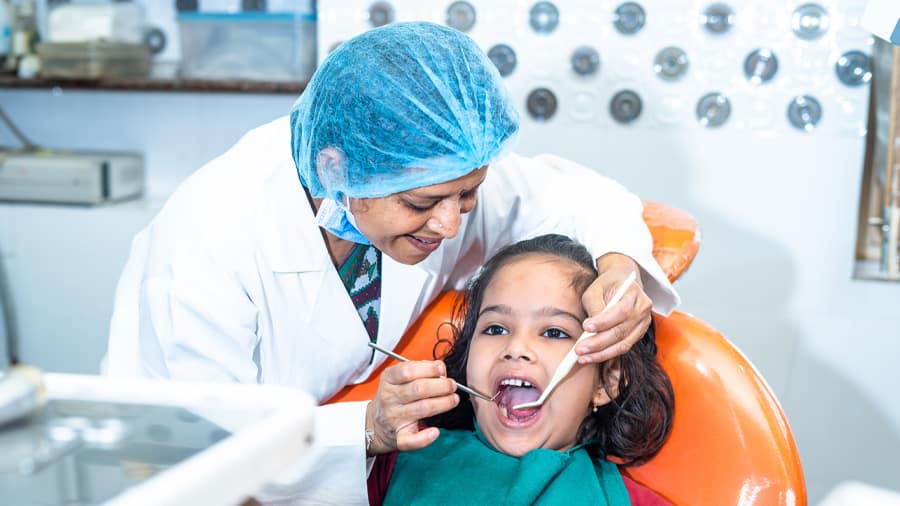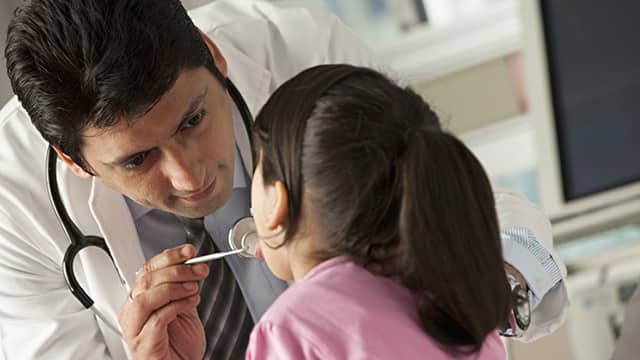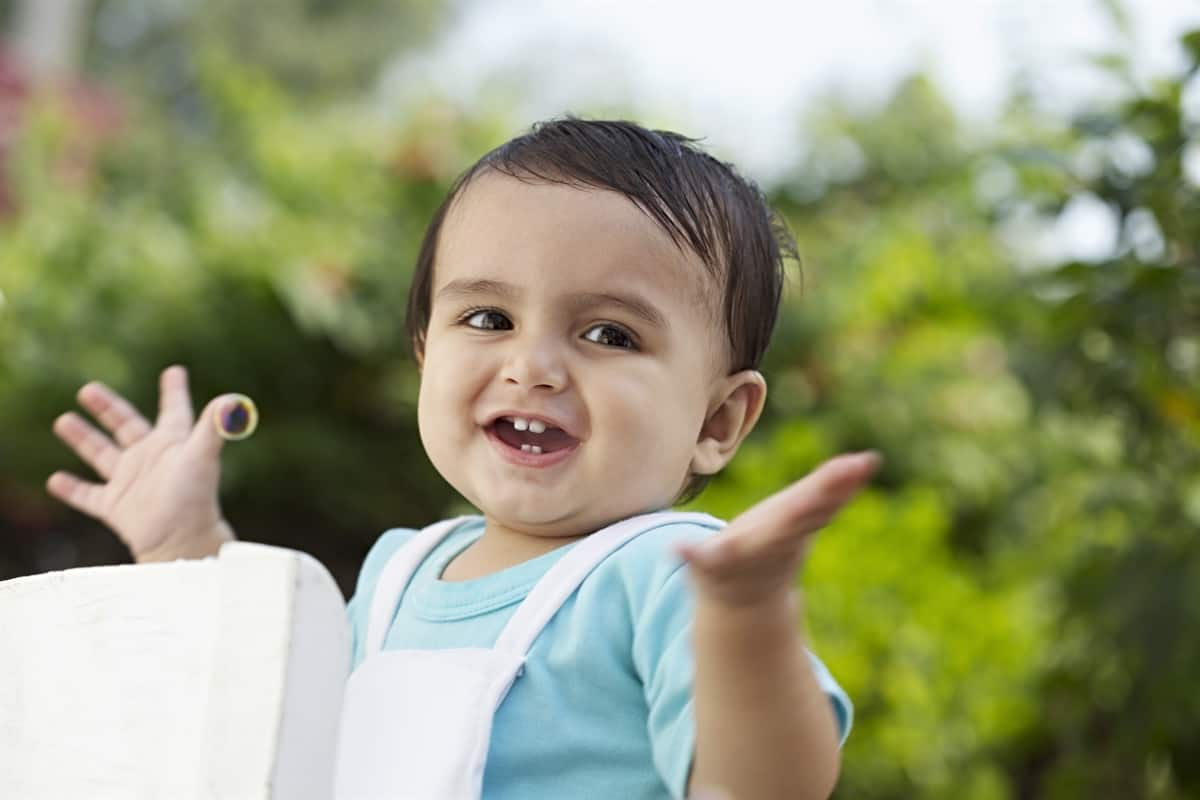What Happens When My Child Swallows Toothpaste?
In short, it depends on the type and amount of toothpaste. According to the India Today, If you swallow toothpaste that does not contain fluoride, you may not need to go to the hospital. However, if your child swallows toothpaste that contains fluoride, which is a key active ingredient for fighting cavities, the amount of toothpaste swallowed will determine whether or not you should seek medical attention.
The good news is that, according to the American Dental Association, if your child swallows the recommended amount of fluoride toothpaste (a pea size), you don’t need to worry, especially if you’re supervising them. That’s because the recommended size should not be enough to have a toxic effect on their body. According to Practo, risks from ingesting fluoride toothpaste include permanent tooth discoloration (dental fluorosis), stomach ailments, acute toxicity, skin rashes (perioral dermatitis), and impairment in glucose metabolism.
What Should I Do If My Child Swallows Toothpaste?
If your child swallows toothpaste, it’s important to stay calm. First, as mentioned before, it’s unlikely for a child to experience anything beyond a stomach ache if the amount of toothpaste swallowed is small. One thing you can do is give your child water or a snack or beverage with calcium, like milk or yogurt (unless told otherwise by a health care provider). This will help ease a stomach ache as the calcium will bind with the fluoride.
If your child has swallowed a large amount of toothpaste, again—it’s important to stay calm and not take extreme measures, like forcing your child to vomit. The best course of action is to immediately call your local poison centre for treatment advice from experts in poison. They may recommend home remedies or seeking medical attention.
Preventing Your Child From Eating Toothpaste
Helping your child understand how to use toothpaste is an important step in developing good oral health habits. Here are some tips to help your child not eat toothpaste:
- Monitor Their Toothpaste Use: The best way to prevent your child from eating toothpaste is to apply just the right amount to his toothbrush yourself. That way, if they do swallow toothpaste, you’ll be aware of how much they ingested. Further, you should keep the toothpaste container away from your child when they’re not brushing their teeth, such as a high cabinet or a locked medicine cabinet.
- Make Sure They’re Spitting and Rinsing: You should also ensure that your child spits out the toothpaste instead of swallowing it each time they brush and that they thoroughly rinse with clean, freshwater afterward to remove the toothpaste residue. The amount of toothpaste used in brushing is safe to swallow, but this will reinforce the idea that toothpaste is not meant to be eaten.
- Consider Your Toothpaste Flavour: Switching to a stronger, mint-flavoured toothpaste rather than candy-flavoured varieties might also discourage eating toothpaste. Though, stronger flavours are more suitable for older children, as younger children can be so put off by a strong mint taste that they refuse to brush or use the toothpaste at all.
- Brush Your Teeth With Your Child: Another recommendation is to brush your teeth alongside your child. Encourage them to imitate you so that they can develop good habits, such as brushing for at least two minutes, holding the brush at the correct angle, brushing their tongue, and spitting out the toothpaste when they’re done.
- Be Patient: Finally, be patient with your child. The desire to eat toothpaste is likely just a passing phase in your child’s life that they will outgrow. When they ask you if you can eat toothpaste, remind them that it’s not a snack. However, if your child consumes a large amount of toothpaste, call the emergency hotline listed on the toothpaste tube or immediately contact a poison control centre.
Now that you know a few tips on how to stop children from eating toothpaste, it’s time to put them into practice to form good habits. Remember—your children are learning to form life habits every day, so a fun tube of flavourful, colourful toothpaste could be mistaken for a snack. As long as you monitor your child’s toothpaste use and brush with them, you will not only be monitoring whether or not they swallow toothpaste but also helping them develop safe and healthy oral health habits.
This article is intended to promote understanding of and knowledge about general oral health topics. It is not intended to be a substitute for professional advice, diagnosis or treatment. Always seek the advice of your dentist or other qualified healthcare provider with any questions you may have regarding a medical condition or treatment.
ORAL HEALTH QUIZ
What's behind your smile?
Take our Oral Health assessment to get the most from your oral care routine
ORAL HEALTH QUIZ
What's behind your smile?
Take our Oral Health assessment to get the most from your oral care routine













